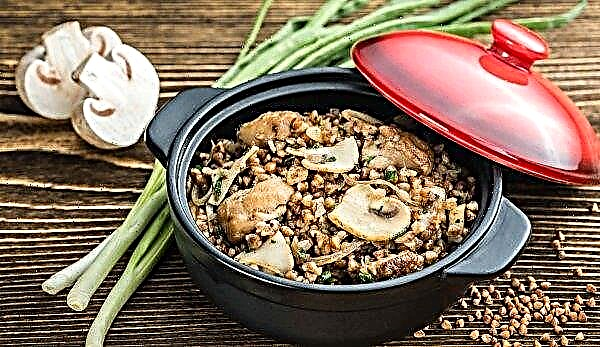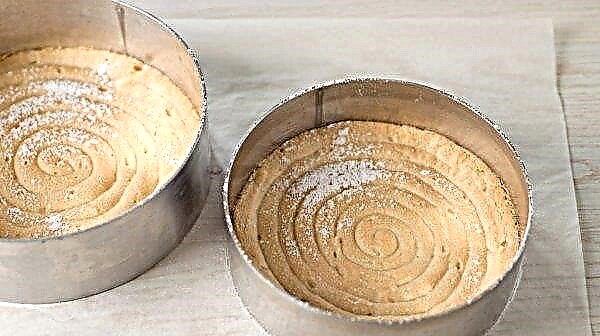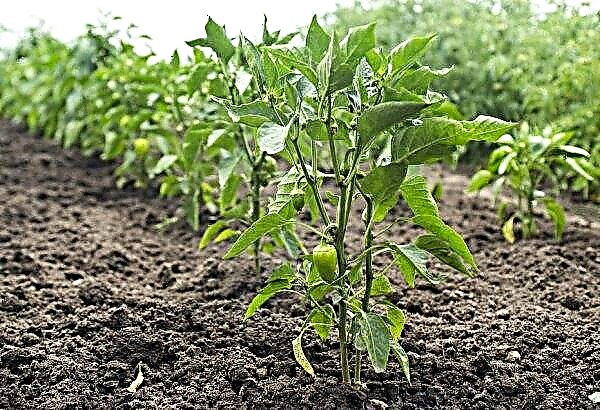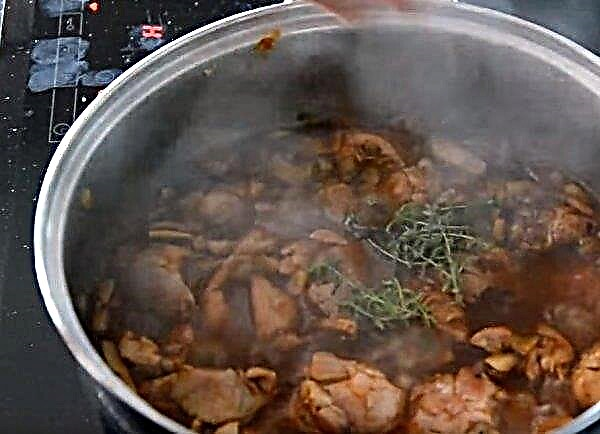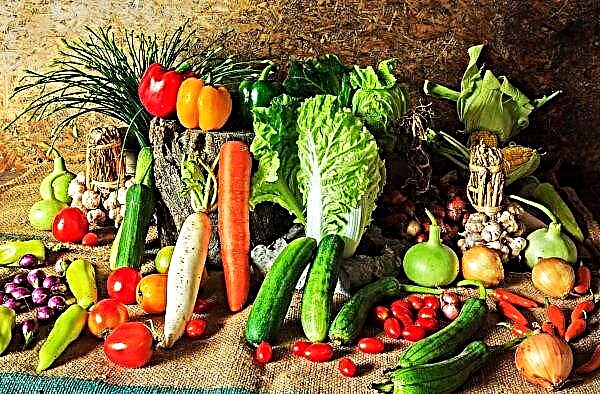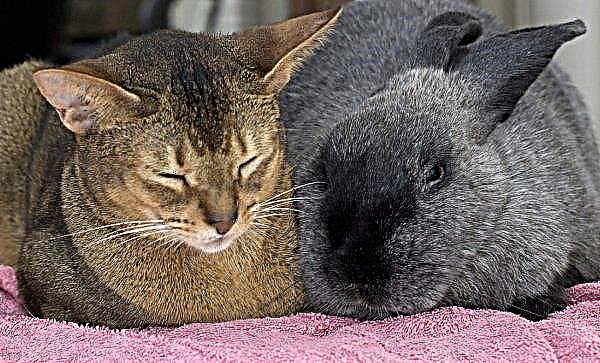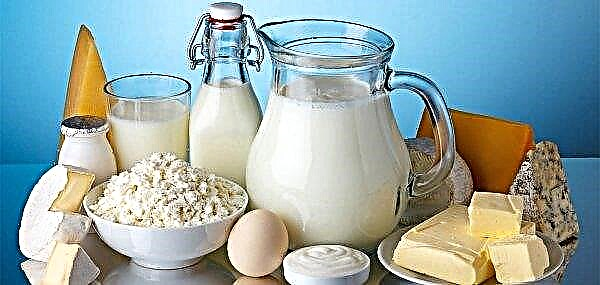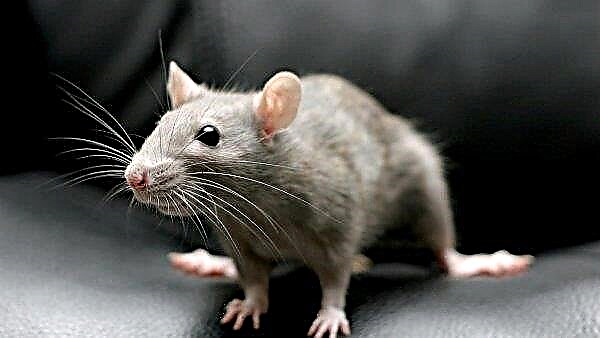Wheat bran contains many useful elements. They are used for diet, weight loss or nursing of patients. This food is most in demand among young people and the elderly. How to use wheat bran correctly, what benefit and harm can be of them, is considered in this article.
What is wheat bran
Bran is a shell of wheat grain that is removed before making flour. Previously, this material was considered waste in flour milling and was simply thrown away. Only at the beginning of the 20th century, scientists were able to determine that the composition of the product contains up to 90% of useful substances, of all those found in grain. Since then, this waste has become in demand in the production of bread, and as an additive to dishes in dietary nutrition.
Product varieties
Bran is produced not only from wheat, but also from other grains of cultivated plants of the bluegrass (or cereal) family. All of them are rich in nutrients.
Did you know? Modern nutrition consists of 70% of food of animal origin, and 30% of vegetable. The use of bran saturates the body with fiber, which is necessary for processing and assimilation of food.
The food uses the waste processing of the following cereals:
- wheat contains almost all B vitamins, as well as carotene and many metals (zinc, magnesium, chromium), and insoluble fiber, which makes the product dietary;
- corn also has a large amount of insoluble fiber and is able to remove toxins from the body;
- barley and oat contain soluble fiber, which helps lower blood cholesterol;
- Rice also has soluble fiber, but it is almost twice as much in them as in oat or barley.

Chemical composition
The product contains both fat-soluble vitamins A, E and K, as well as water-soluble B1, B2, B3 (PP), B4, B5, B6 and B9.
Trace elements are represented by the following chemicals (mg per 100 g):
- potassium - 1182;
- phosphorus - 1013;
- magnesium - 611;
- selenium - 77.6;
- calcium - 73;
- Manganese - 11.5;
- iron - 10.6;
- zinc - 7.3.
Also, copper and sodium are present in insignificant amounts, which is useful for the developing children's body and with a strict diet.
The nutritional value of bran
The product is dietary and its nutritional value is small.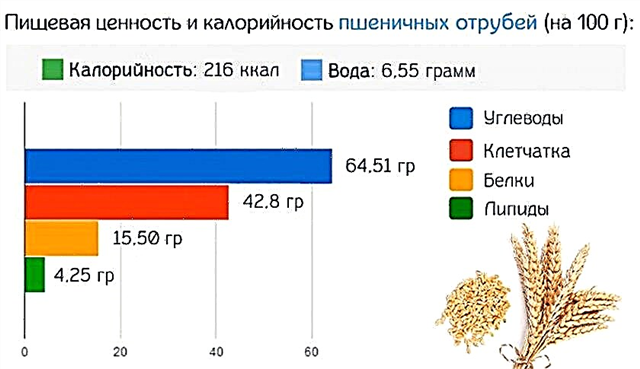
The indicators are as follows (per 100 g):
- calorie content - 160 kcal;
- proteins - 16 g;
- fats - 4 g;
- carbohydrates - 20 g;
- water - 15 g;
- ash - 6 g;
- dietary fiber - up to 43 g.
Useful properties of a dietary product
Eating bran helps to cleanse the body of toxins, improve digestion and water-salt metabolism. At the same time, metabolism and energy processes are accelerated.
Important! Purity and quality of the product are of great importance. Poorly processed and dirty bran can bring the exact opposite effect from the expected cleansing of the body.
The properties of the product help in the work of the gastrointestinal tract, fill the muscles with energy, and contribute to the normalization of the cardiovascular system.
Video: wheat bran
How to choose upon purchase
There are two types of product on sale - crushed and granular. In the first case, the product is made clean and natural. And in the second, when granulating, it is possible to add a variety of fillers - flavors, preservatives, and even sugar. According to customer reviews, it is better to purchase the product in a transparent bundle, in which case its consistency, color and the absence of bugs or their larvae will be visible. You also need to carefully study the composition and date of manufacture of bran. Normal bran is yellow or gray-yellow in color and has no taste or smell. If they are of a different color, with a bitter taste and an unpleasant odor - the product is spoiled and not suitable for use.
You also need to carefully study the composition and date of manufacture of bran. Normal bran is yellow or gray-yellow in color and has no taste or smell. If they are of a different color, with a bitter taste and an unpleasant odor - the product is spoiled and not suitable for use.
The use of wheat bran
The product can be taken for food, for weight loss and for medical purposes. In the husk obtained from rough cleaning of grains, the nutrient content is maximum.
Important! For use in cold dishes, bran is soaked in hot water or fried.
In cooking
The culinary use of the product is not associated with its separate preparation, but with the addition to various dishes. Bakery products that fit well with this ingredient are best suited. Also, bran well complement the taste of various cereals, soups, okroshka. This cereal product can be added to drinks - kvass, a decoction of berries, compote, kissel, kefir.
In medicine
The medical use of the product is mainly in the prevention of malignant tumors in the gastrointestinal tract. Eating animal meat leads to its lengthy processing, which causes the intestines to carry out many contractions. Such a load can lead to cancerous tumors.
Bran is not a medicine, but adding them to the diet will help in the digestion and assimilation of food "heavy" for the stomach. It is worth washing the meat dish with compote, fruit drink or jelly with the addition of a spoonful of grain processing products.
For weight loss
During the diet, bran can be eaten as an independent dish. But, because of their almost complete lack of taste, you need to add honey, jam or other sweets in small portions. It is also possible to use syrups in small quantities.
Storage rules
It is best to store the product in a transparent container - it can be a plastic container or an ordinary glass jar with a nylon cover. It is important that the bran is dry and clean - then they will remain in the pantry for a year. If during tasting a bitter or sourish taste is felt, then the bran is spoiled and must be disposed of.
Did you know? Bran is useful not only for humans, but also well suited for horses. The traditional oat diet can be diluted with husk remaining from the processing of wheat grains.
Possible harm and contraindications
In addition to benefits, the product in some cases can harm human health, since it has contraindications. Given that bran absorb liquid, the daily dose of their use should not be more than 30 g. In this case, you will not have to drink an additional portion of the liquid.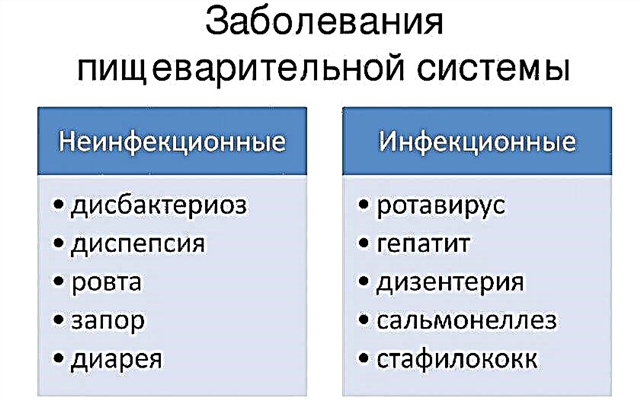 People with diseases of the digestive system (duodenum or rectum, stomach ulcer) should not eat this product. Patients with hepatitis, chronic gastritis, cholecystitis or pancreatitis in the exacerbation phase can also be harmful to health.
People with diseases of the digestive system (duodenum or rectum, stomach ulcer) should not eat this product. Patients with hepatitis, chronic gastritis, cholecystitis or pancreatitis in the exacerbation phase can also be harmful to health.
Which bran is healthier: rye or wheat
There is no single answer to this question, since the composition of these two grains is approximately the same. Wheat is slightly milder for human digestion, and rye is coarser and harder to pass through the intestines. The dietary fiber contained in these grains is almost identical.
Rye is more suitable for cleaning the body of toxins, and wheat contribute to weight loss.. Bran is a good product for dietary nutrition, weight loss and the prevention of gastrointestinal diseases. Therefore, a small amount (1-2 tablespoons) can be introduced into the daily diet on an ongoing basis.

